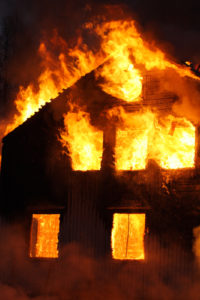 Like many handcrafted goods from the early 1900s, the knob and tube electrical wiring systems of the time were smartly designed and well-built. However, much time has passed and homes almost always need to replace the wiring system with a modern solution.
Like many handcrafted goods from the early 1900s, the knob and tube electrical wiring systems of the time were smartly designed and well-built. However, much time has passed and homes almost always need to replace the wiring system with a modern solution.
If you own a home in the Marin or Sonoma County area built before 1940, it would have used knob and tube wiring. This type of electrical system passes the wiring through ceramic tubes and pivots it around ceramic knobs. When it was installed, the electrical wiring was safe and functioned quite well.
You may be thinking, many homes still have knob and tube wiring and haven’t burned to the ground yet — so what’s the problem?
The bottom line is that homeowners with “K&T” wiring today face a higher risk of fire hazards, electroshock injuries, and damage to appliances.
The Flaws of Knob and Tube Wiring
The ceramic knobs and tubes are actually not the main problem with knob and tube wiring. The major hazards stem from the 100-year-old technology and the potential for damage over the years:
- No ground conductor. Grounded systems protect the home from significant fire risks, and the systems themselves are protected from extensive damage.
- No junction boxes. The wiring was soldered together without junction boxes, which is today known be to less safe.
- Switches placed on neutral wires. This means you can turn off a light switch, but current is still flowing.
Additionally, knob and tube wiring likely features safety risks due to the effects of time and alterations over the years. Previous owners and amateurish electricians may have performed unsafe modifications such as splicing in modern wiring, adding extra wiring branches improperly, or unsafely altering the insulation.
What Can Go Wrong if I Have Knob and Tube Wiring?
Knob and tube wiring can pose a fire hazard, injury risk, and potential damage to your appliances for several reasons:
- The wiring and insulation have become frayed or damaged.
- Home repairs and renovations have caused nail punctures or other damage.
- New insulation overheats the wiring — K&T wiring needs open air in strategic places to be properly insulated.
- Squirrels or other animals may have eaten the old insulation.
- The home needs more power than the original wiring was designed to supply. You may be overworking the system as it is, or running with alterations that make the K&T wiring unsafe.
- K&T wiring is unsafe for wet locations (bathroom, kitchen, etc.). You need a grounded system to safely power appliances in these locations.
- Homeowners insurance can be expensive and difficult to obtain for homes with knob and tube wiring.
Don’t panic — if your electrical system functions normally, you probably aren’t in immediate danger. However, you should immediately call an electrician to inspect the wiring if you have not done so in recent years. An electrician can recommend your best course of action.
Remember, your electrical wiring may be running safely and effectively today — but tomorrow a storm or electrical problem may suddenly spark a serious house fire.
Living in a home with knob and tube wiring? Get an electrical inspection, get the necessary repairs, and make sure you have safe wiring fit for the modern age.

